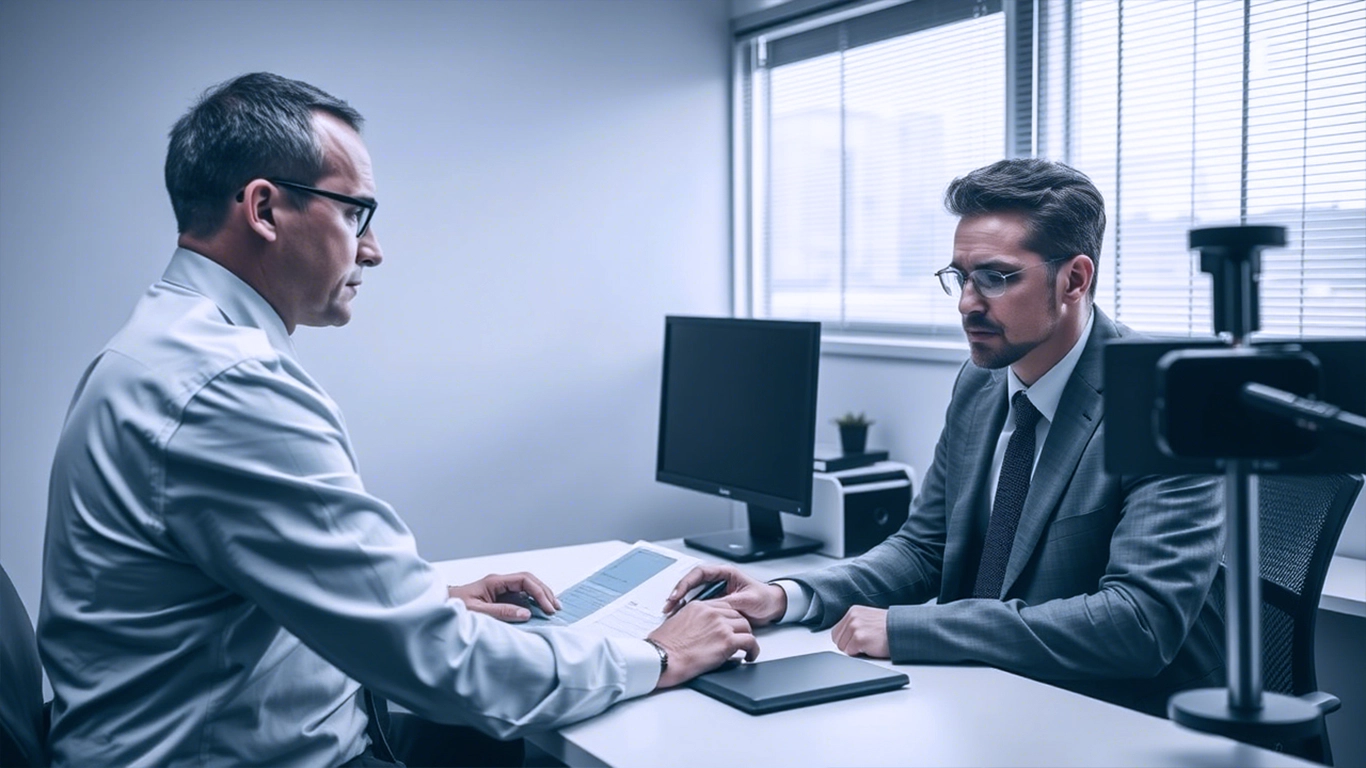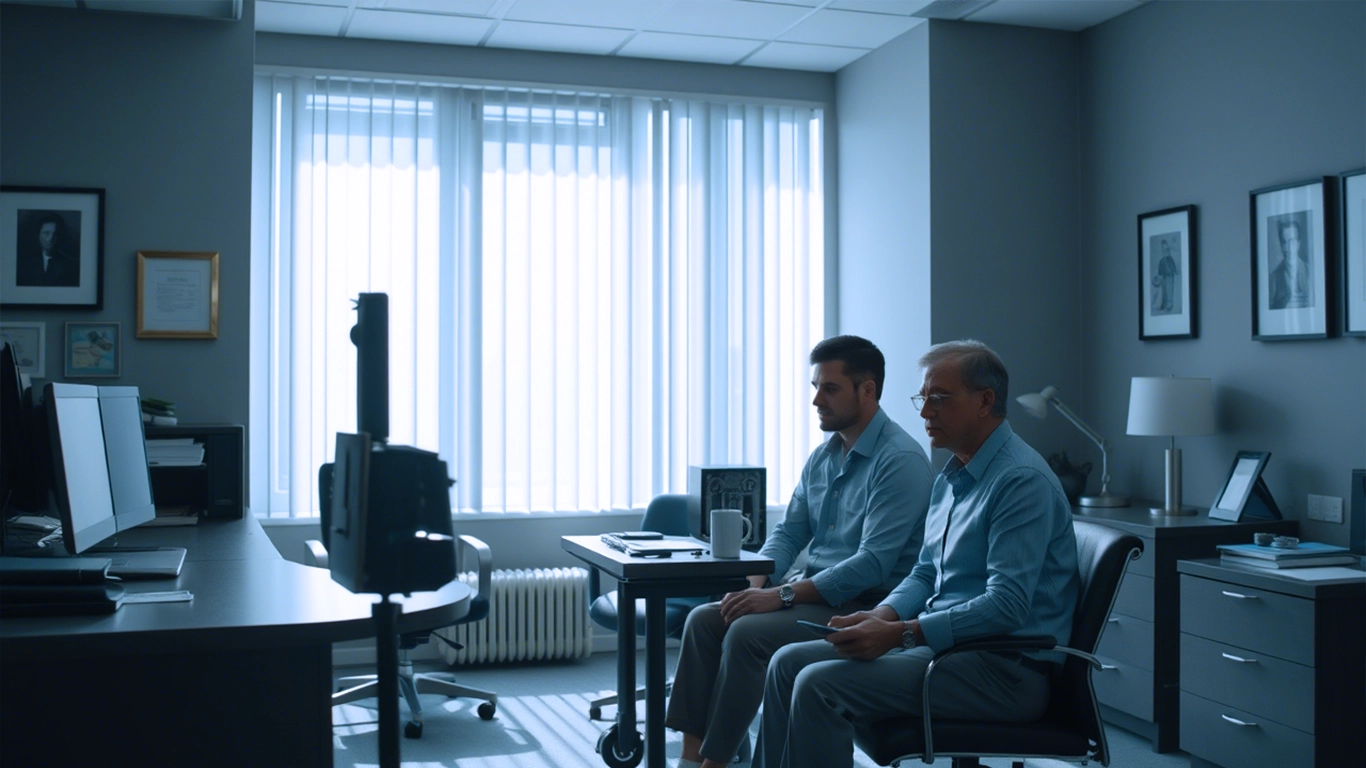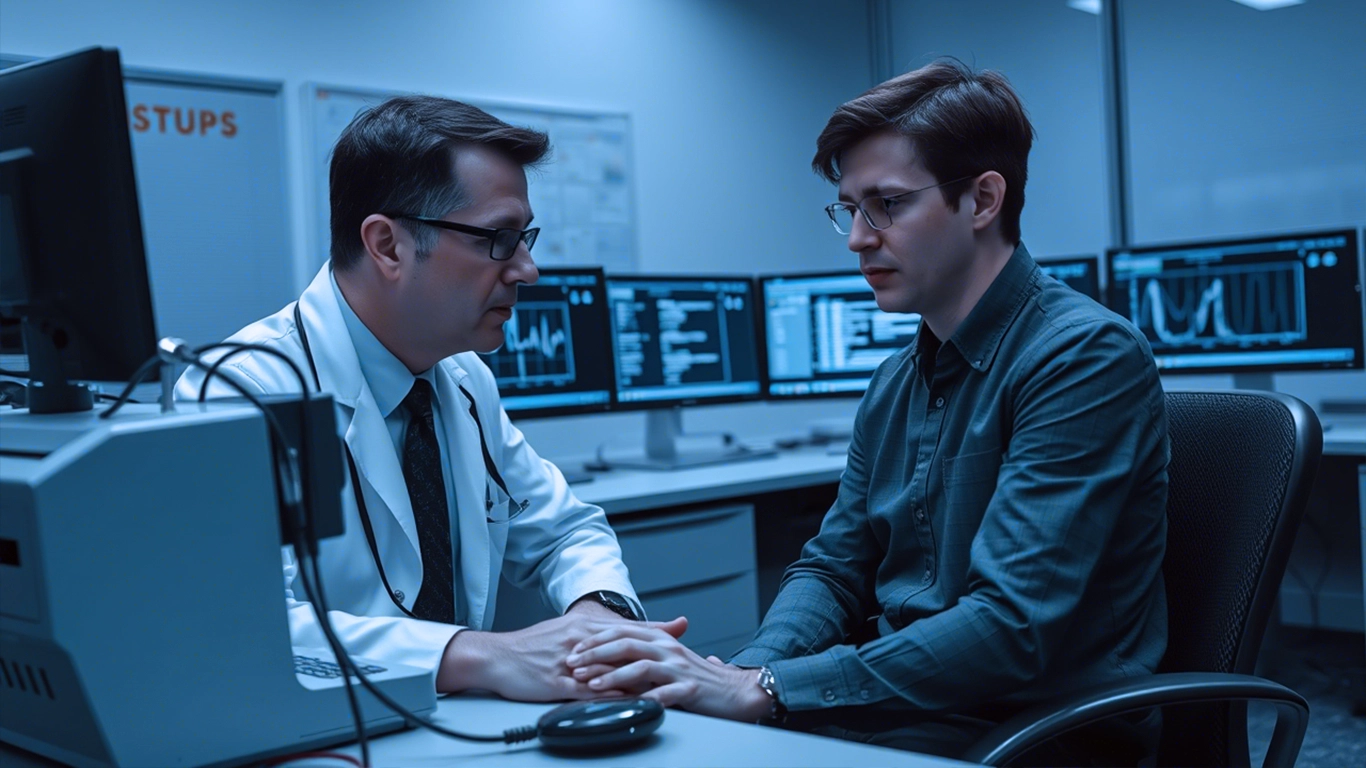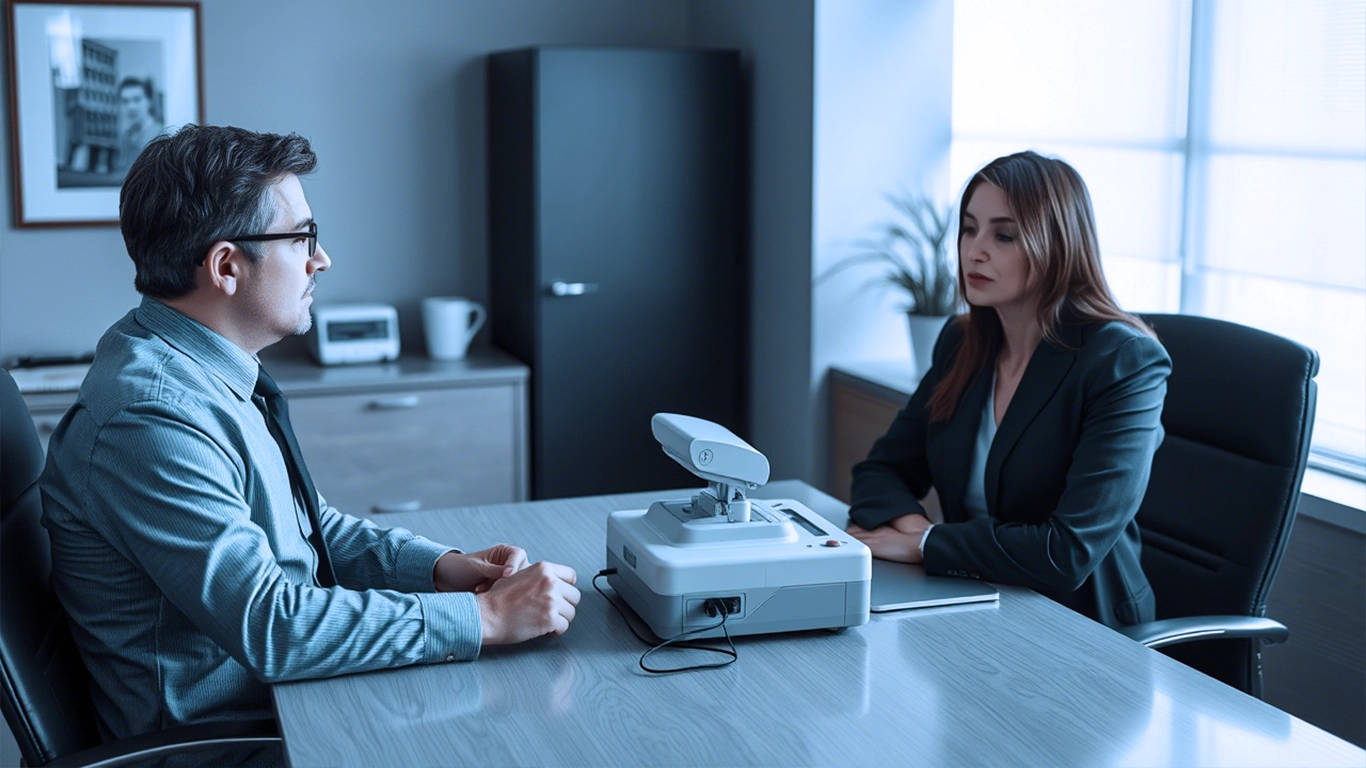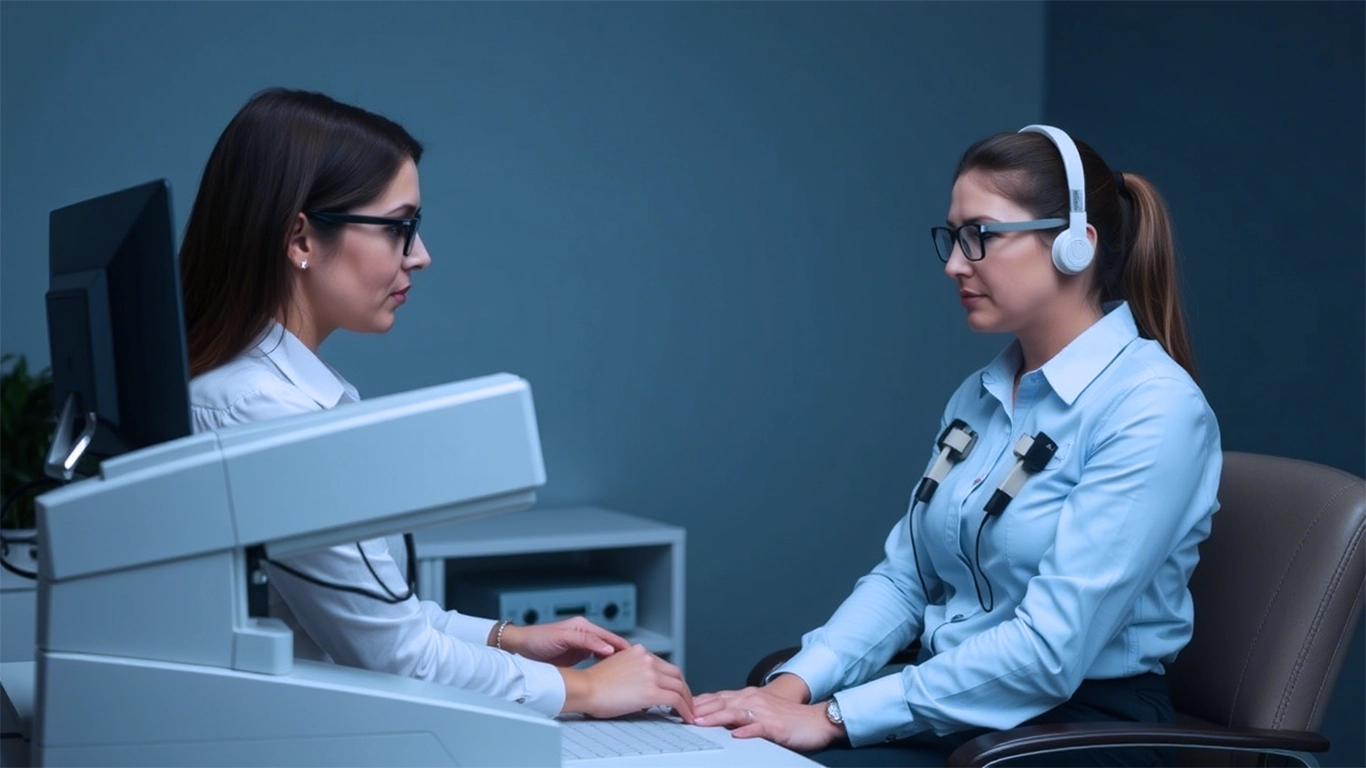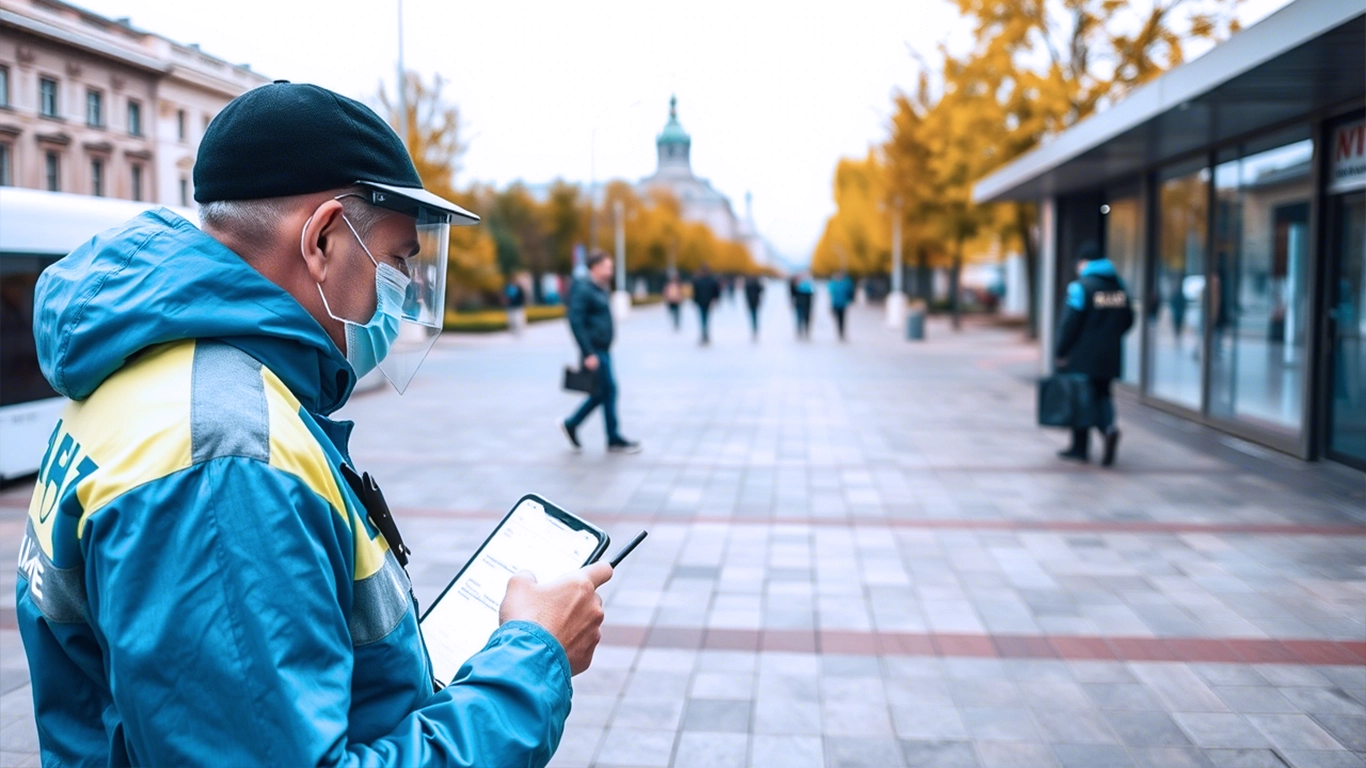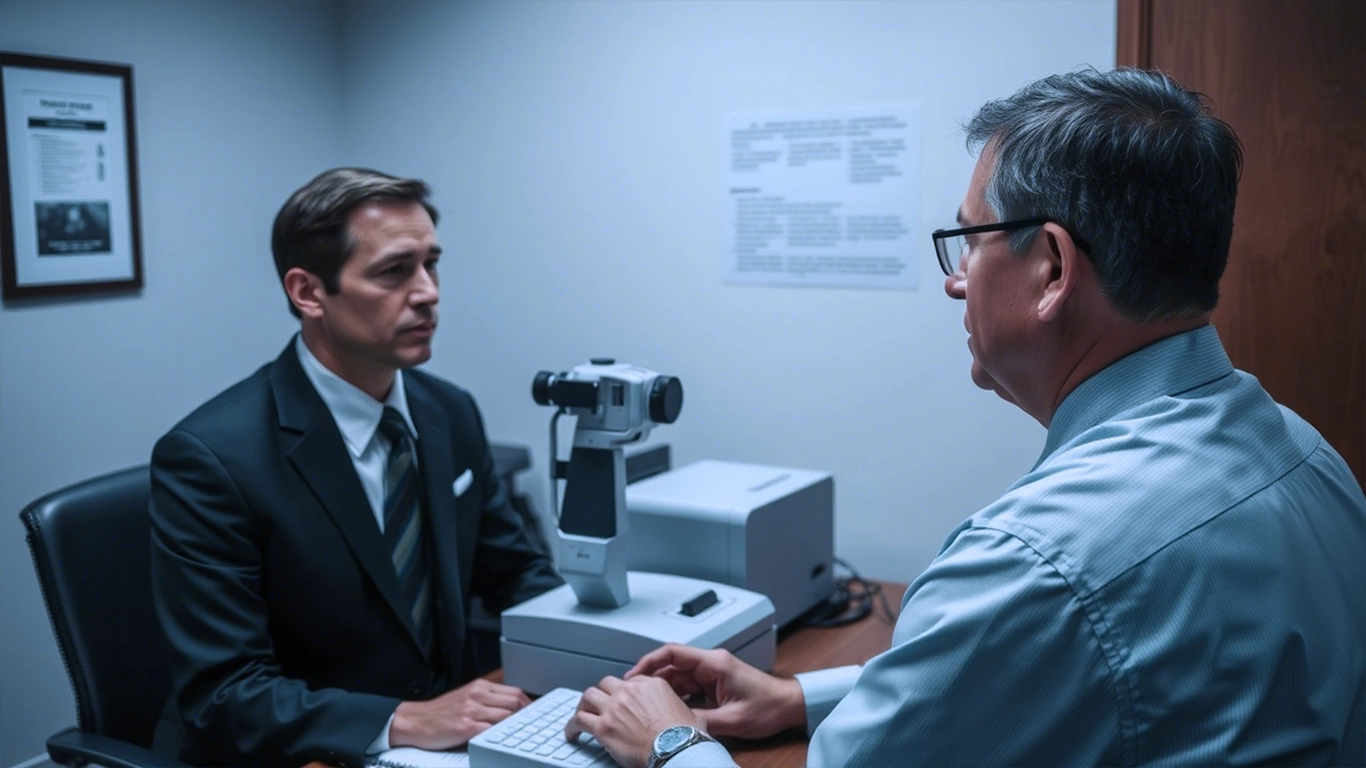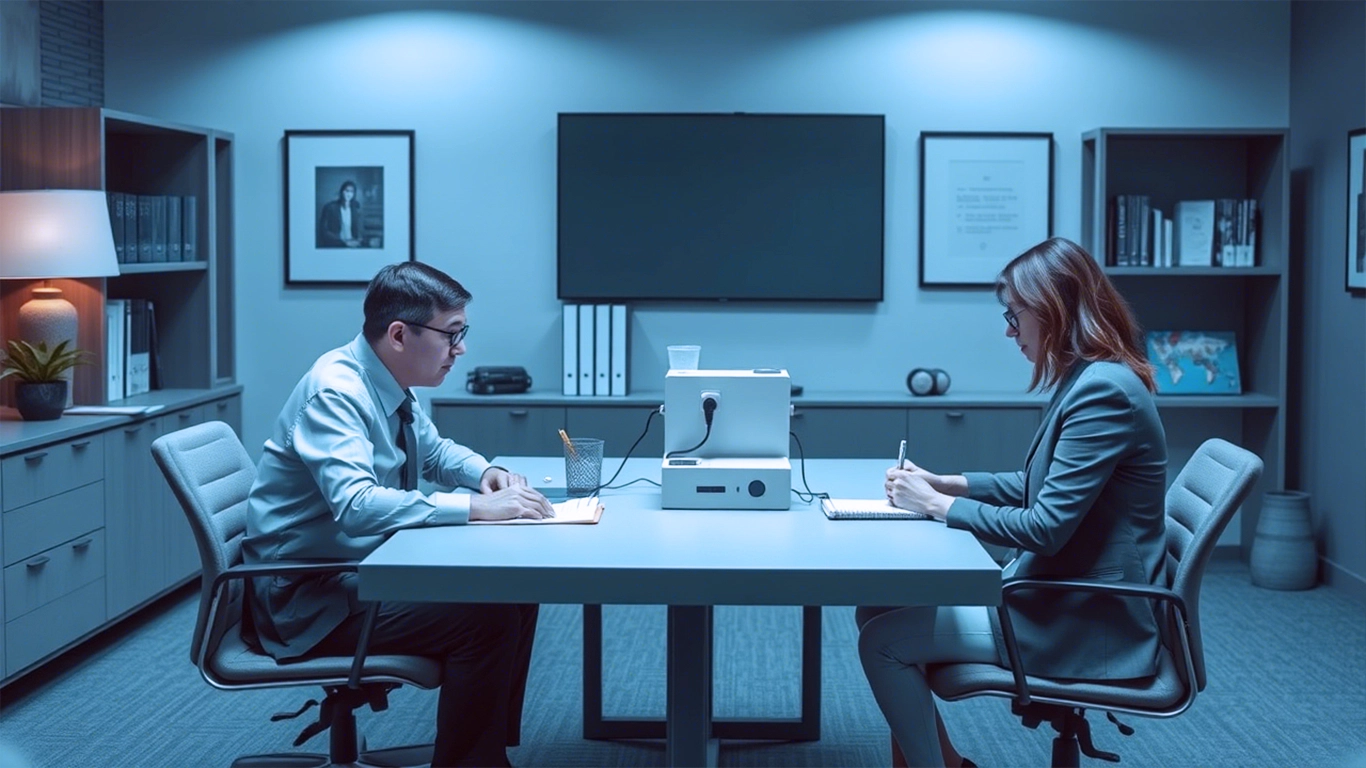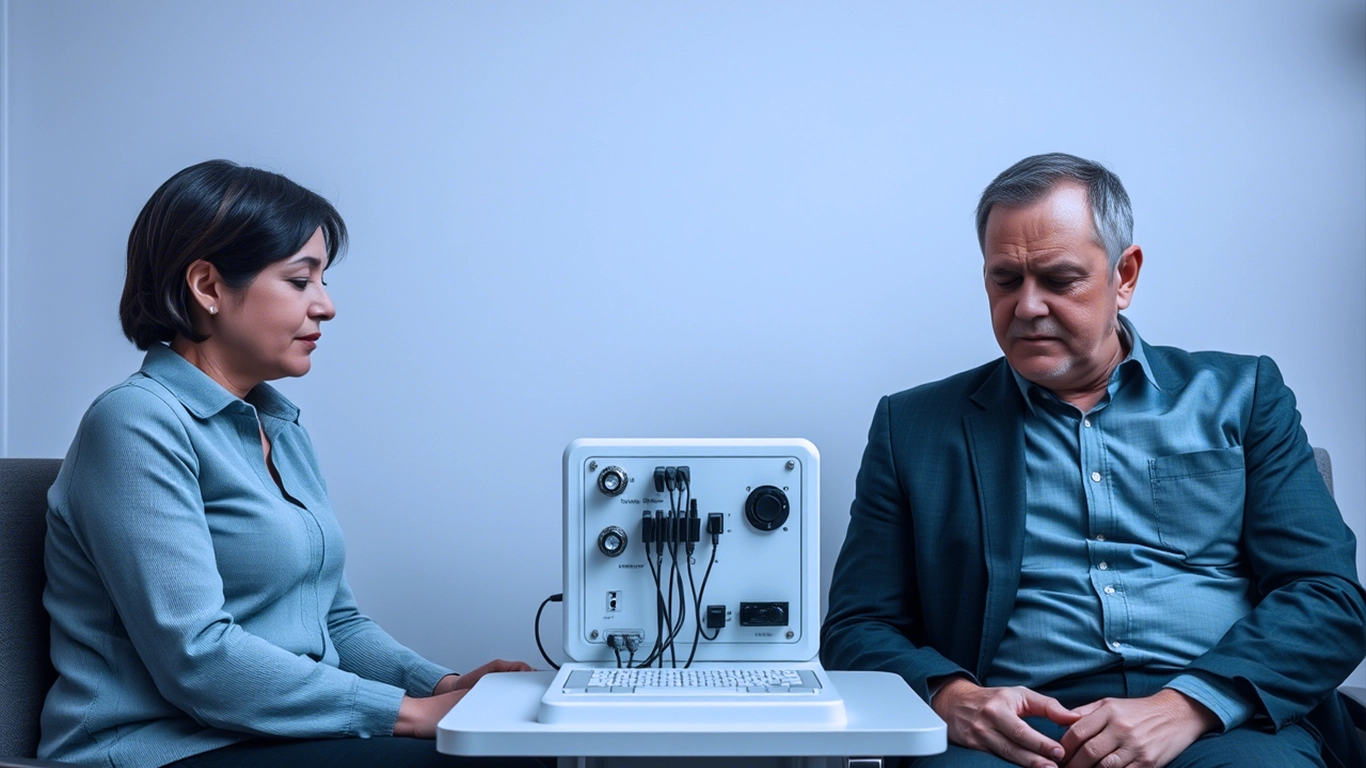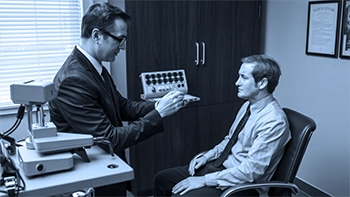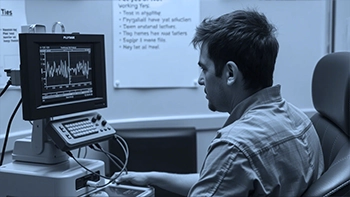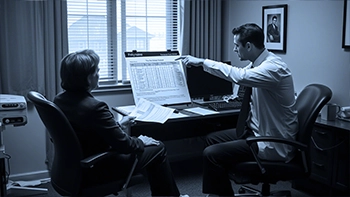Select your language
In this article, I will describe firsthand how I conduct the main polygraph test, providing a detailed overview of each stage of the process, methods for interpreting the collected data, and real-life examples from my practice. I will strive to explain professional aspects in a clear and understandable manner so that you can gain a comprehensive understanding of how a polygraph works and what happens during the examination.
Detailed Description of the Polygraph Testing Process
Polygraph testing is a multi-stage procedure that requires thorough preparation and adherence to methodology. Each stage is crucial for obtaining reliable results. Below, I will outline the key phases of a polygraph examination and explain what happens at each step.
Preliminary Preparation
Before the test begins, I conduct an extensive preparatory process. First and foremost, I review all materials related to the case: facts, circumstances, and versions of events. It is also important to gather information about the examinee—age, health status, emotional condition, and any chronic illnesses. This information helps me consider the individual’s characteristics during the test. Additionally, I prepare a list of relevant questions, grouping them into structured tests that will be used during the examination.
At this stage, organizational and ethical aspects are also addressed. The examinee must provide voluntary consent for the procedure—this is typically documented in writing. I explain to both the client and the examinee that the polygraph examination is confidential and that the results will only be used for the agreed-upon purposes. It is crucial that the examinee participates voluntarily and understands the nature of the test, as coercion can induce stress and distort the results.
Pre-Test Interview
Before connecting the examinee to the polygraph, I conduct a detailed pre-test interview. This conversation helps establish trust and reduce unnecessary anxiety. I explain in a friendly manner how the polygraph works, what sensors will be used, and which physiological indicators will be recorded. It is important to dispel myths and fears—I clarify that the polygraph does not "read thoughts" but only records physiological responses, and that honest answers have nothing to fear.
During the interview, we thoroughly discuss the phrasing of questions to be asked. I always read each planned question aloud to ensure the examinee fully understands it. If any words or phrasing cause confusion, I adjust them accordingly. For example, if timeframes or specific terms need clarification, we address this beforehand. This approach eliminates surprises during the test, ensuring the respondent's reaction is tied to the question's content rather than its wording.
At this stage, I also ask several neutral questions in a conversational manner to observe the person’s baseline state. For instance, I might ask about the weather or how they arrived at the location. This helps create a relaxed environment. I explain that during the test, answers should be brief, usually "yes" or "no," without lengthy explanations. We also discuss the examinee’s rights: they may request a break or ask for clarification at any point. After this conversation, the examinee typically feels more at ease and understands what to expect.
Connecting the Polygraph and Safety Measures
After completing the instructions, I invite the examinee to sit comfortably in the polygraph chair. Then, I begin connecting the polygraph sensors. A modern polygraph is a computerized device with multiple sensors that record various physiological indicators. I typically use the following sensors:
- Respiration sensors: two elastic belts (pneumographs) are attached to the chest and abdomen to record breathing rhythm and depth (thoracic and abdominal breathing).
- Cardio sensor (blood pressure cuff): placed on the arm or wrist to measure blood pressure and pulse fluctuations.
- Galvanic skin response (GSR) sensors: small electrodes attached to the fingers to record skin conductivity changes due to perspiration.
- Motion sensor (if needed): sometimes, a seat sensor or accelerometer is used to detect body movements, helping to identify any attempts to distort results.
When attaching the sensors, I ensure that all connections are secure but not uncomfortable for the examinee. Next, I activate the polygraph system and calibrate the equipment to verify that each device is providing accurate baseline readings. At this point, I ask the examinee to sit still for a moment, breathe evenly, and answer a few simple calibration questions such as: "Is your name John?" or "Are you 30 years old?" These known-answer questions allow me to fine-tune the device for the individual and ensure that all sensors are functioning correctly.
The Main Test: Conducting the Polygraph Examination
Once preparation is complete, I proceed with the main test. This phase consists of a series of questions answered while the polygraph records physiological responses. Questions are presented in sets (tests) and are typically repeated multiple times in a different order. This repetition helps confirm the consistency of reactions: a key question may be asked 3–5 times throughout the session, ensuring that responses remain consistent.
During testing, I mix different types of questions, which generally fall into three categories:
- Neutral questions: harmless questions unrelated to the investigation, used to establish baseline readings and ease tension. Examples: "Is today Thursday?" or "Are you sitting in a chair right now?" These usually elicit truthful responses and help gauge normal physiological states.
- Control questions: broader ethical questions not directly linked to the event but designed to provoke mild anxiety if deception is present. Examples: "Have you ever taken something that didn’t belong to you?" These questions provide a benchmark for analyzing responses to relevant questions.
- Relevant (critical) questions: these are the primary questions related to the incident or suspicion. Examples: "Did you steal the missing money from the safe?" or "Were you involved in this event?" If the examinee is being deceptive, these questions typically trigger heightened physiological responses.
The test is conducted in a controlled manner: I ask each question clearly and wait for a simple "yes" or "no" answer before proceeding to the next. Throughout the session, I monitor the polygraph’s live readings, ensuring clean recordings without interference.
Interpreting the Data and Analyzing Results
After completing the test, I move on to the crucial phase—analyzing the polygraph data. I save and print the physiological response graphs and carefully examine them using a scientific approach and professional expertise.
First, I compare the examinee’s reactions to control and relevant questions. The core principle of analysis is that if a person is truthful, their response to relevant questions should be similar or weaker than their response to control questions. If deception is present, reactions to relevant questions will show significantly greater physiological changes.
The key physiological indicators I analyze include:
- Breathing patterns: changes in rhythm, breath-holding, or irregularities after a question.
- Cardiovascular responses: fluctuations in blood pressure and pulse, such as sudden spikes or irregular patterns.
- Galvanic skin response: increased perspiration, often visible as spikes in the graph.
- Movement artifacts: unusual movements or attempts to disrupt readings.
By comparing results across multiple cycles, I assign a standardized score to each response. A significantly higher response to a relevant question compared to control questions suggests deception. If responses remain stable and consistent across all questions, the person is likely truthful.
Conclusion
The main polygraph test is a complex but well-structured procedure that, when conducted properly, yields highly valuable results. As a professional polygraph examiner, I approach each test with meticulous attention to detail and responsibility.
Polygraph analysis is grounded in scientific principles of physiology and psychology. However, every individual is unique, and interpreting subtle signals requires both expertise and experience. A properly conducted polygraph test is a powerful tool that does not "read minds" but accurately detects involuntary physiological reactions to deception.
Ultimately, a polygraph is not a "magic truth machine" but a scientific instrument combined with a precise methodology. The accuracy of the results depends on the examiner's professionalism, proper preparation, and the integrity of all participants. When all conditions are met, the reliability of conclusions is extremely high, ensuring fairness and transparency in investigations.







